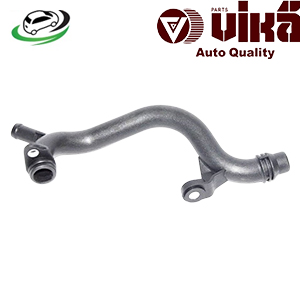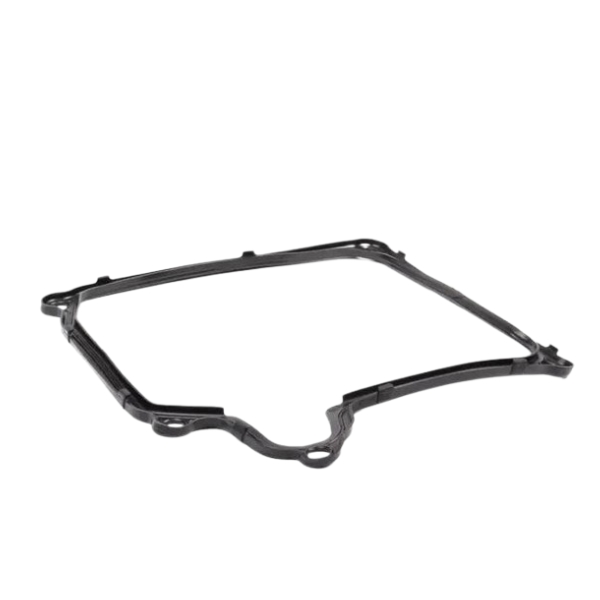Get VW Golf VII Pan Gasket 02E321371E in Kenya
The pan gasket is a critical component in a vehicle’s engine assembly, specifically designed to seal the oil pan to the engine block. Its primary role is to prevent oil leaks and maintain proper oil pressure within the engine, thereby ensuring efficient lubrication and optimal engine performance. This comprehensive overview will delve into the functions, types, benefits, common symptoms of failure, and maintenance practices related to pan gaskets.
Functions of the Pan Gasket
- Sealing the Oil Pan: The primary function of the pan gasket is to create a tight seal between the oil pan and the engine block. This seal prevents engine oil from leaking out, which is crucial for maintaining proper oil levels and pressure.
- Pressure Retention: The gasket helps maintain the pressure within the oil pan, allowing the oil pump to circulate oil effectively throughout the engine. A proper seal is vital for ensuring that the oil reaches all necessary components for lubrication.
- Thermal Expansion Accommodation: Engine components expand and contract due to temperature changes during operation. The pan gasket is designed to accommodate these thermal expansions, maintaining a reliable seal even under fluctuating temperatures.
- Preventing Contamination: The gasket also acts as a barrier against contaminants that could enter the oil pan, such as dirt, dust, and moisture. Keeping these contaminants out helps maintain the oil’s cleanliness and effectiveness.
- Minimizing Noise and Vibration: A well-fitted pan gasket can help reduce engine noise and vibrations by dampening sound and providing a stable connection between the oil pan and engine block.
Types of Pan Gaskets
- Rubber Gaskets: Rubber gaskets are popular due to their flexibility and ability to create a tight seal. They are resistant to oil and heat, making them suitable for most applications. However, they may have a shorter lifespan compared to other materials.
- Silicone Gaskets: Silicone gaskets offer excellent sealing capabilities and are highly resistant to temperature fluctuations and oil degradation. They provide a strong bond and can conform to irregular surfaces, making them ideal for challenging applications.
- Felt Gaskets: Felt gaskets are less common but may be found in older vehicles. They offer decent sealing properties but can deteriorate more quickly than rubber or silicone gaskets, especially when exposed to oil and heat.
- Composite Gaskets: Composite gaskets are made from a combination of materials, such as rubber and metal, to provide enhanced durability and resistance to heat and oil. They are often used in high-performance applications where a robust seal is essential.
- Metal Gaskets: Metal gaskets are typically used in high-performance or heavy-duty applications due to their strength and resistance to high temperatures. They can withstand extreme conditions but may require precise machining for a proper fit.
Benefits of a Properly Functioning Pan Gasket
- Prevention of Oil Leaks: A well-maintained pan gasket effectively prevents oil leaks, which can lead to low oil levels and inadequate lubrication. This helps protect the engine from potential damage caused by insufficient oil supply.
- Enhanced Engine Performance: By maintaining proper oil pressure and ensuring that oil circulates effectively, a functional pan gasket contributes to optimal engine performance. This can lead to improved fuel efficiency and power output.
- Reduced Maintenance Costs: Preventing oil leaks and maintaining oil levels reduces the risk of engine damage and associated repair costs. A properly functioning pan gasket can save vehicle owners from costly repairs in the long run.
- Extended Engine Life: Proper lubrication is crucial for engine longevity. By ensuring that oil remains contained and properly circulated, a functional pan gasket helps extend the life of engine components.
- Improved Environmental Impact: Preventing oil leaks not only protects the engine but also minimizes the risk of environmental contamination. Leaking oil can harm soil and waterways, so a functional pan gasket contributes to a cleaner environment.
Symptoms of a Failing Pan Gasket
- Oil Leaks: The most obvious symptom of a failing pan gasket is the presence of oil leaks under the vehicle. Oil may pool beneath the engine, indicating that the gasket is not sealing properly.
- Low Oil Levels: A noticeable drop in oil levels may indicate a leak caused by a faulty pan gasket. Regularly checking the oil level can help identify potential issues early.
- Oil Spots on the Ground: Finding oil spots on the ground where the vehicle is parked is a clear sign of an oil leak. If these spots are consistently present, it may be time to inspect the pan gasket.
- Engine Overheating: A failing pan gasket can lead to low oil levels, which may cause the engine to overheat. Insufficient lubrication can result in increased friction and heat generation.
- Unusual Engine Noise: If the engine is making unusual noises, such as knocking or ticking, it may indicate inadequate lubrication due to low oil levels caused by a leaking pan gasket.
Maintenance of the Pan Gasket
- Regular Inspections: Incorporate visual inspections of the oil pan gasket during routine maintenance checks. Look for signs of oil leaks, cracks, or deterioration in the gasket material.
- Check Oil Levels: Regularly monitor oil levels and top up as necessary. If you notice a significant drop in oil levels, investigate potential leaks, including checking the pan gasket.
- Replace When Necessary: If a pan gasket shows signs of wear or failure, replace it promptly to prevent further issues. Replacing a damaged gasket is a relatively simple and cost-effective maintenance task.
- Proper Installation: When installing a new pan gasket, ensure that it is properly aligned and seated. Follow the manufacturer’s specifications for torque settings and installation procedures to achieve a reliable seal.
- Use Quality Parts: When replacing a pan gasket, use high-quality parts that meet or exceed manufacturer specifications. Quality gaskets provide better sealing capabilities and durability.
- Avoid Over-Tightening: When securing the oil pan, avoid over-tightening the bolts, as this can damage the gasket and lead to leaks. Follow the recommended torque specifications to ensure a proper fit.
Conclusion
In summary, the pan gasket plays a vital role in ensuring the proper functioning of a vehicle’s engine by preventing oil leaks and maintaining optimal oil pressure. Its primary functions include sealing the oil pan, retaining pressure, accommodating thermal expansion, and preventing contamination. Various types of pan gaskets are available, each with its benefits and applications. A properly functioning pan gasket offers numerous advantages, including enhanced engine performance, reduced maintenance costs, and extended engine life.
Recognizing the symptoms of a failing pan gasket is crucial for maintaining engine health, and regular maintenance practices can help prevent costly repairs. By understanding the importance of the pan gasket and taking proactive measures to ensure its integrity, vehicle owners can enhance their engines’ performance and longevity while minimizing environmental impact.
Follow us on Facebook for more parts.





Reviews
Clear filtersThere are no reviews yet.